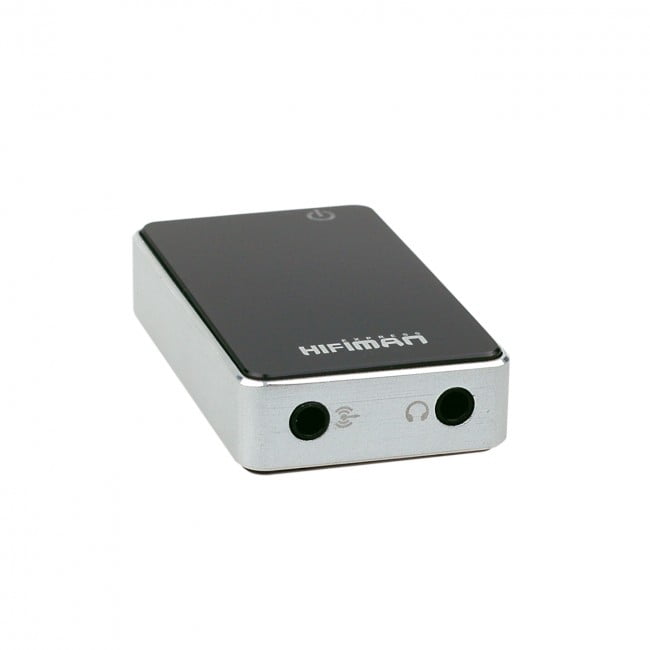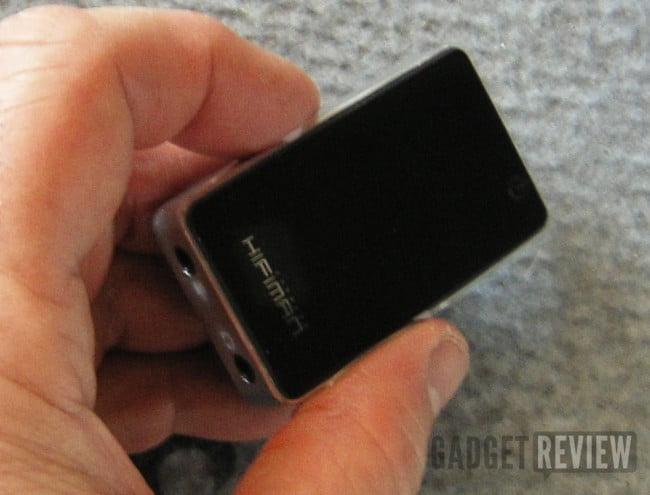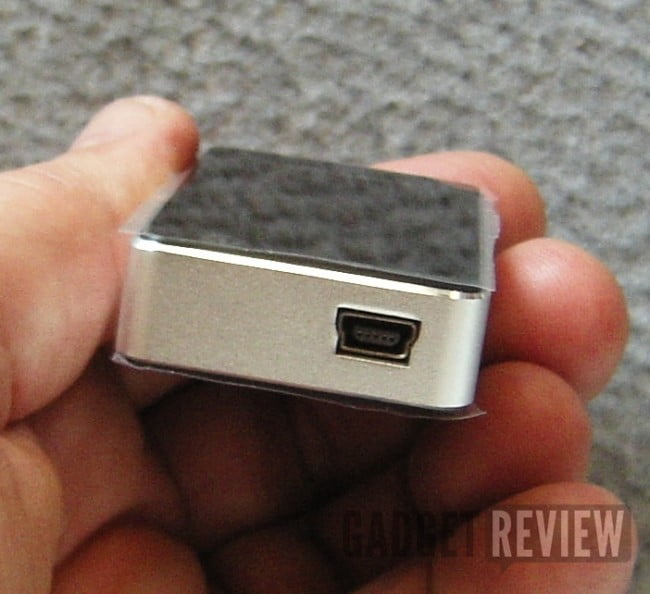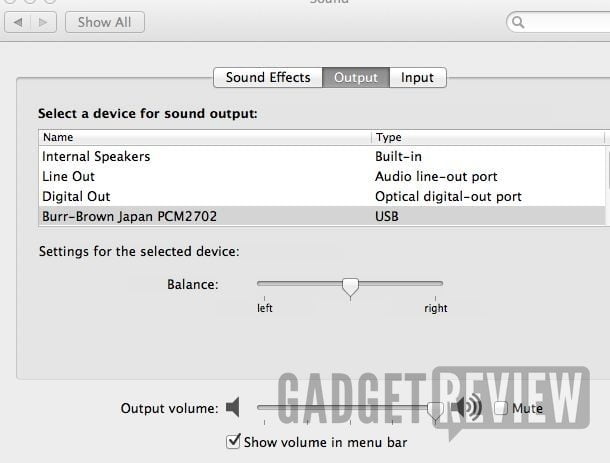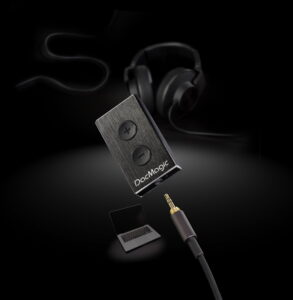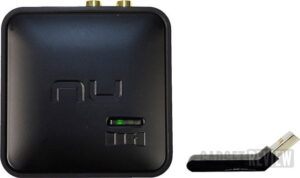The first time I heard the word “DAC” I thought it was a misspelling of a company that used to send me catalogs of unusual electronic equipment made in dubious places for ridiculously low prices. Of course, I eventually learned what a “digital audio converter” was and that it’s now found in audio devices to convert a digital signal to analog — because the sound we hear comes through the air and impinges upon our ears. Cyborgs, we ain’t yet.
With that said, this isn’t the only DAC adapter we cover. We also recommend the Cambridge Audio DacMagic XS and the Nu Force Air DAC uWireless system. Further details can be found in our reviews.
Now devices created by Dr. Fang Bian are known for their level of sophistication when it comes to audio — the guy’s a certifiable genius when it comes to making electronics dance to his tune. And when you consider how crummy the DAC is that you’ll find in a so-called “high-tech” device like your laptop, it’s no wonder that the sound is often the last thing the manufacturer is pointing to with pride.
But a standalone DAC can be expensive, not to mention cumbersome to use. But what’s the value in having a pair of top-rated headphones or powered speakers attached to your desktop/laptop when the DAC isn’t worth jack? So when Dr. Bian sent me the HIFIMAN HM-101 USB DAC, I was expecting some high-end tech that wouldn’t be lugged around because it’d be too bothersome.
Instead, I’m looking at a little rectangular box that barely weighs enough to juggle. And at under 3-inches in height and under 1-inch wide/deep, easier to toss in a pocket than my smartphone.
A quick spin shows me that there’s a USB socket at one end and a mini-jack and line output sockets at the other. As for the controls and power socket — there aren’t any! Nor any internal battery — oh, I get it, USB not only transfers the digital signal through the USB cable, but supplies the power too. Speaking of USB, if you have a great pair of USB-C headphones, this DAC won’t be necessary for you to use.
And because I hate manuals, I can easily figure out how it’s used: you plug a USB cable into the USB socket and the other end into a USB socket on the desktop/laptop. Then you insert a headphone plug or a mini-jack plug into the other socket and put on your leading wired headphones or turn on the speakers. Of course, you have to select the HIFIMAN HM-101 USB DAC on the desktop/laptop so it knows to output the sound, but that’s easy on a Mac and just a few extra clicks on a PC (if the blue light on the HIFIMAN goes on, you’ve got power).
The HIFIMAN HM-101 USB DAC is going to have impressive specs, according to the info, I was told: inside there’s a Texas Instrument PCM2702 16 bit 48kHZ chipset. And conjoined to that an S/N (signal to noise) ratio of 96dB, 0.07% THD (total harmonic distortion), and stereo crosstalk (signal leaking from one program channel to another) of 78dB. Like my ear registers all that (Cyborgs R Us, not yet). But I certainly can do an “unscientific” test of listening with and without the HM-101 to hear whether there’s a discernible difference.
I’ll be using my MacBook with CD-quality audio files I ripped earlier. For listening, I’ve got a pair of Audio Technica ATH-CP500i in-ear headphones (better than the junky pair you get with iOS devices, and in fact equal to or better than many pairs costing over $100, in my opinion). For the portable speakers, I’m going with the STEM Time Command Mini — a small portable audio dock for iOS devices whose speakers are not spaced very far apart. And because I’ve heard some reviews noting that there’s sometimes noise interference, I’ve got a really good USB cable to work with, not some $2 junk.
So the Audio Technica in-ears are plugged into the MacBook directly and I play the beginning track from Boston’s debut album with the volume set at the midway point. Stopping the track after about a minute, I plug in the HIFIMAN HM-101 USB DAC and plug the in-ears into them. I then repeat playing the track. I immediately notice that the volume seems a bit higher and clearer. The stereo effect doesn’t seem to have been changed any (didn’t expect it to), but a lot of the harshness of the guitars, especially when using the Time Command Mini, seems to have been dissipated. Basically, the track sounds “cleaner,” to use a decidedly unscientific term.
I then repeated this entire process, only playing Landslide by Fleetwood Mac and, for the kick of hearing how old orchestral tracks can sound, The Last Reel from the Adventures of Superman 1950’s TV show soundtrack CD (first just with the MacBook and then through the HIFIMAN HM-101 USB DAC). Those points I mentioned earlier with the in-ears now are even more pronounced, and I can turn the sound up a bit more without getting the distortion that otherwise would be the case. I’m even picking up little nuances that weren’t coming through before. Or to be more exact, the nuances in the audio were there but the DAC in the MacBook wasn’t picking them up. On occasion, I did hear a bit of hiss between tracks when nothing was playing, but it wasn’t annoying or unbearable. And the level of the bass seemed deeper and vocals crisper — definitely the case with the Fleetwood Mac song. I even found my Apple-supplied iPhone earbuds sounding better with the HIFIMAN than without.
Editor’s Rating:
[rating:4/5]
Great
Bottom line: At a retail of $39, the HIFIMAN HM-101 USB DAC is compact enough to remove any barrier to being carried around. And the setup and use are a no-brainer. Plus it actually does what it says — improving the audio you’re hearing. If the whole idea of being an audiophile is to spend big bucks on components so you can show off — you’ ’ll have to fake it when displaying the HIFIMAN HM-101 USB DAC. But for sure you won’t have to fake how much better the sound now is.
Pros
- High-end digital to audio converter
- No computer driver needed
Cons
- Occasional interference during quiet passages
